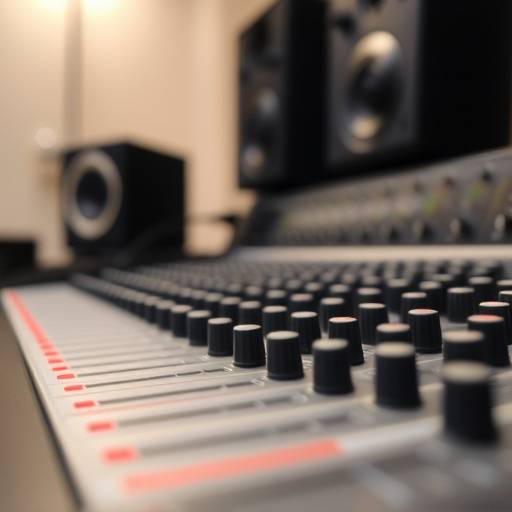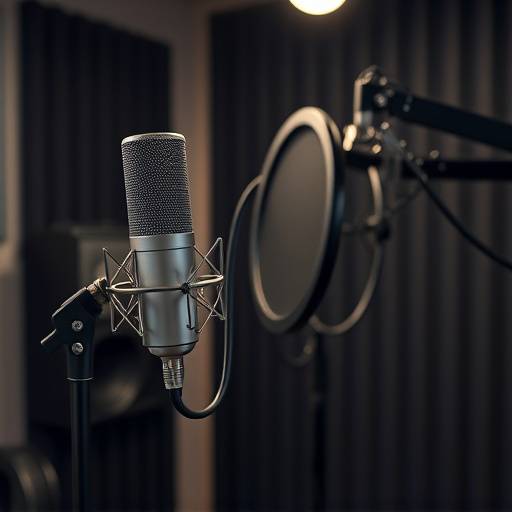Latest Articles

The Art of Sonic Sculpting: Mastering the Mixing Stage
Posted by Elias Thorne on October 26, 2024
Mixing is where the magic truly happens. It's the delicate balance of frequencies, dynamics, and spatial placement that transforms individual tracks into a cohesive and compelling soundscape. At Aurora Soundscapes Studio, we believe that a great mix starts with a clear vision and a deep understanding of the source material. This article explores essential mixing techniques, from gain staging to EQing, compression, and creative effects processing. Learn how to create depth, separation, and emotional impact in your mixes, whether you're working on a rock album, a hip-hop track, or a film score.
Gain staging is the foundation of a clean and dynamic mix. By carefully adjusting the levels of each track at the input stage, you can ensure that your signals are strong enough to avoid noise, but not so hot that they cause clipping. EQing is used to shape the tonal characteristics of each instrument or vocal. Subtractive EQ, where you cut unwanted frequencies, is often more effective than boosting frequencies. Compression controls the dynamic range of your tracks, making them sound punchier and more consistent. Use compressors sparingly to avoid over-compressing your mix. Finally, creative effects such as reverb, delay, and chorus can add depth, space, and texture to your mix, enhancing the overall listening experience. Remember to always listen critically and make decisions based on what sounds best for the music.

Microphone Mastery: Choosing the Right Mic for Every Source
Posted by Anya Petrova on October 19, 2024
The microphone is the first link in the audio chain, and its choice can profoundly impact the final sound of your recording. Different microphones excel at capturing different sources, and understanding their characteristics is crucial for achieving professional results. Condenser microphones, known for their sensitivity and wide frequency response, are often used for vocals, acoustic instruments, and drum overheads. Dynamic microphones, more robust and less sensitive, are ideal for loud sources like drums, guitar amplifiers, and snare drums. Ribbon microphones, with their warm and vintage tone, are often favored for vocals, horns, and guitar amps.
When selecting a microphone, consider the source, the environment, and the desired sonic characteristics. For vocals, a large-diaphragm condenser microphone with a cardioid polar pattern can provide a smooth and detailed sound. For drums, a combination of dynamic microphones on the snare and kick drum, along with condenser microphones as overheads, can capture a balanced and powerful sound. For acoustic guitars, a small-diaphragm condenser microphone placed a few inches from the soundhole can provide a clear and natural tone. Experiment with different microphones and placements to find the best combination for each source. Don't be afraid to try unconventional techniques – sometimes the unexpected choice can yield the most interesting results. We at Aurora Soundscapes have a mic locker full of options!

Podcast Power: Tips for Recording a Captivating Podcast
Posted by Ben Carter on October 12, 2024
Podcasting has exploded in popularity, providing a platform for voices from all walks of life. Creating a captivating podcast requires more than just a good idea – it demands high-quality audio, engaging content, and a consistent production workflow. Start with a clear concept and target audience. Plan your episodes in advance, outlining key topics and talking points. Invest in a good microphone and headphones. A USB microphone is a great option for beginners, while a professional XLR microphone paired with an audio interface provides greater flexibility and sound quality.
Record in a quiet and acoustically treated environment to minimize noise and reverberation. Use pop filters and microphone stands to improve the clarity and stability of your recordings. Practice good microphone technique, speaking clearly and consistently into the microphone. Edit your podcast to remove errors, pauses, and unwanted noise. Add music, sound effects, and transitions to enhance the listening experience. Promote your podcast on social media, podcast directories, and other online platforms. Engage with your audience, respond to comments, and solicit feedback to improve your content. Consistency is key – aim to release new episodes regularly to keep your audience engaged. At Aurora Soundscapes Studio, we provide full podcasting recording and mixing services for all your audio needs.


